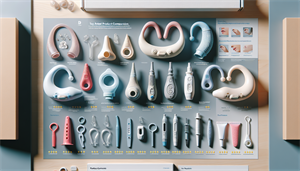
Imagine being trapped in a vicious cycle of disrupted sleep, where the struggle to breathe wakes you up and the inability to stay asleep makes it harder to breathe.
This scenario is all too familiar for those grappling with comorbid sleep apnea and insomnia. In the labyrinth of sleep disorders, these two conditions often cross paths, complicating symptoms and solutions. But what if we told you that understanding the interaction between sleep apnea and insomnia is a game-changer? This blog post aims to illuminate the intricate relationship between these two sleep disorders, guide you through their diagnosis, and explore effective sleep apnea and insomnia treatment strategies. Let’s embark on this journey to reclaim restful nights.
Key Takeaways
COMISA (Comorbid Insomnia and Sleep Apnea) is common and complex, requiring a simultaneous treatment approach and a comprehensive diagnostic process due to overlapping symptoms that can exacerbate each other. Diagnosis of sleep disorders demands expertise from sleep specialists and involves a combination of clinical interviews, sleep studies, and the use of diagnostic tools like polysomnography and actigraphy.
Effective treatment for sleep disorders like sleep apnea and insomnia may involve a combination of CPAP therapy and cognitive behavioral therapy (CBT-I), along with lifestyle adjustments such as improving diet, exercise, and sleep environment.
Unveiling the Link Between Sleep Apnea and Insomnia
Understanding sleep apnea and insomnia as separate entities is straightforward, but when they intertwine, the picture becomes more complex. The coexistence of these two conditions, also known as COMISA (Comorbid Insomnia and Sleep Apnea), is more common than one might think. The overlapping symptoms and their propensity to exacerbate each other can lead to a challenging diagnostic process.
It might surprise you to learn how common chronic insomnia symptoms are in individuals diagnosed with Obstructive Sleep Apnea (OSA). The complexity of the relationship between sleep apnea and insomnia is such that it demands a simultaneous treatment approach to provide the most beneficial outcomes. To understand the complex interaction between these conditions, we will further discuss the various aspects of comorbid sleep disorders, including insomnia and OSA.
Understanding Comorbid Sleep Disorders
Comorbid Insomnia and Sleep Apnea (COMISA) manifests as the simultaneous presence of sleep maintenance insomnia and sleep apnea in an individual. The diagnosis process for COMISA is multi-faceted, incorporating:
- Clinical interviews
- Sleep diaries
- Actigraphy
- Self-report questionnaires, including the Insomnia Severity Index
Patient demographics significantly influence the prevalence of COMISA. Here are some key factors to consider:
- More women exhibit symptoms of insomnia
- More men report experiencing witnessed apneas
- Older age serves as a risk factor, increasing the likelihood of COMISA
Diagnosing this condition is no simple task, with over 50% of sleep related breathing disorder patients, also known as Sleep-Disordered Breathing (SDB), reporting significant poor sleep complaints. The overlapping symptoms pose a challenge for clinicians, necessitating a comprehensive approach to diagnosis.
The Impact of Sleep Apnea on Insomnia Symptoms
Sleep apnea not only disrupts breathing during sleep but also exacerbates insomnia symptoms. Factors such as nocturia (excessive urination at night), arousals, and anxiety can significantly impact sleep quality. Interestingly, the use of Continuous Positive Airway Pressure (CPAP) therapy, a common treatment for sleep apnea, may perpetuate the symptoms of insomnia due to increased awakenings during therapy.
Moreover, factors like mask discomfort due to frequent awakenings and conditions like anxiety and depression contribute to low CPAP therapy adherence.


